Letting Go of Productivity Guilt When You Need to Rest
🧠 Why Rest Feels Wrong (Even When It’s Necessary)
You’ve hit the wall. Your mind is foggy, your body is heavy, and all your energy is drained. You know you need to rest—but the guilt creeps in almost instantly.
“You didn’t earn this break.”
“You should be doing something.”
“You’re falling behind.”
This internal dialogue is exhausting. It’s also painfully common in a culture that idolizes hustle, overachievement, and measuring worth by output. When you’re living with a chronic illness, mental health condition, neurodivergence, or even just surviving stress, the pressure to “keep going” can feel relentless.
But here’s the truth: you’re allowed to rest, even when you don’t feel like you deserve it. Productivity guilt is a learned response—not a moral compass.
This article will help you understand why this guilt arises, how to challenge it, and how to create a more compassionate relationship with rest.
Looking for online therapy? Click here.
⛓️ The Productivity Myth That Traps Us
From school to work to social media, we’re taught a single message over and over: your value comes from what you do.
This conditioning shows up in phrases like:
- “I’ll rest when I’m done.”
- “I’m too lazy.”
- “I didn’t do enough today.”
- “I can’t sit still—I need to be useful.”
We believe rest must be earned, and that being tired without “just cause” (like a completed to-do list or a 10-hour shift) is laziness. But this belief ignores key facts:
- Rest is biologically necessary, not optional.
- You don’t need to justify exhaustion.
- Chronic illness, stress, trauma, or neurodivergence drain energy faster.
- Healing isn’t linear—and productivity doesn’t equal progress.
🧭 Step 1: Notice When Guilt Arises

Productivity guilt often operates below the surface. It can sneak in even during “off” time—making you scroll mindlessly, multitask rest, or feel anxious while resting.
Watch for signs like:
- Fidgeting or checking your phone during downtime
- Feeling like you “should be doing something”
- Judging your day based on tasks completed
- Calling yourself lazy, unmotivated, or useless
- Having trouble relaxing unless you’ve “earned it”
Simply noticing when guilt shows up is the first act of resistance.
🧘 Step 2: Separate Your Worth from Your Output
You are not a machine. You are not a spreadsheet. You are not a to-do list.
You are a whole person with needs, fluctuations, and emotions.
Try saying:
- “I am worthy of rest, even if I got nothing done today.”
- “My value is not based on what I produce.”
- “It’s okay to need more downtime than others.”
- “Rest is part of the process—not a break from it.”
Write these on sticky notes. Set them as reminders. Repeat them daily. You're rewiring a core belief—and that takes practice.
🧱 Step 3: Break the False Dichotomy—You’re Not Lazy
There’s a dangerous binary in our culture: productive = good, resting = bad.
But these are false opposites.
Rest is not laziness. Laziness is not a character flaw. Most people labeled “lazy” are actually:
- Overwhelmed
- Burned out
- In chronic pain
- Mentally exhausted
- Depressed, anxious, or neurodivergent
- Facing invisible struggles
What looks like “doing nothing” is often a survival strategy.
So instead of asking, “Why can’t I just push through?”
Ask, “What is my body trying to protect me from?”
🔁 Step 4: Redefine Rest as Recovery, Not Reward
If you only rest after you’ve finished everything, you’ll never get to rest. The list will grow. Your body will protest. Your mind will unravel.
Instead, treat rest like fuel, not a prize.
Would you drive your car without stopping for gas?
Would you expect a phone to run without charging it?
Then why expect your brain and body to keep going without breaks?
Build in rest before you crash.
Not just sleep—but true, intentional downtime.
🛌 Step 5: Allow "Guilt-Free" Rest Activities
Some people need permission to rest without a purpose. If that’s you, try these “bridge” activities that feel less idle but are still restorative:
- Listening to calming music
- Cuddling a pet or stuffed animal
- Drinking tea while looking out the window
- Coloring, knitting, or doing a simple craft
- Watching comfort TV without multitasking
- Lying on the floor and doing nothing
Eventually, you’ll no longer need these as a justification—but they can be a gentle entry point to rest.
Looking for online therapy? Click here.
🧠 Step 6: Understand the Mental Load
Rest guilt often forgets the mental energy you’re expending behind the scenes:
- Managing pain or symptoms
- Holding unprocessed emotions
- Planning and organizing things no one sees
- Self-regulating through anxiety or depression
- Masking neurodivergent traits to survive the day
These are invisible workloads. And they are real. If all you did today was hold it together—that is more than enough.
🕳️ Step 7: Address the Root of the Guilt
Productivity guilt is often a symptom of something deeper. Ask yourself:
- What am I afraid will happen if I stop?
- Who taught me that rest = weakness?
- Do I fear being judged, falling behind, or becoming irrelevant?
- Am I equating rest with failure?
These questions take courage. They may uncover family dynamics, school trauma, perfectionism, or capitalist conditioning. Therapy or journaling can help explore them with more clarity and compassion.
💬 Step 8: Reclaim the Language of Rest
Words shape our reality. Start shifting your internal script.
Instead of:
- “I wasted the whole day.”
- “I was so lazy today.”
- “I did nothing.”
Say:
- “I honored my need to slow down.”
- “I’m letting my nervous system recover.”
- “Rest is productive in its own way.”
- “My body deserved that pause.”
Every time you change how you describe rest, you challenge a toxic system—and reclaim your own rhythm.
🧩 Step 9: Align With Your Natural Energy Rhythms

Not everyone functions best from 9 to 5. Some of us have:
- Afternoon crashes
- Morning fog
- Week-on, week-off energy
- Short bursts followed by long pauses
Observe your natural flow over days or weeks. Ask:
- When do I feel most alert or focused?
- When do I crash—and what precedes it?
- What kind of rest helps me actually recharge?
Productivity doesn't have to be daily. Sustainable energy comes from respecting your own patterns, not copying someone else’s.
💞 Step 10: Let Rest Be Seen Without Shame
One of the hardest but most powerful acts is to rest openly—without apologizing, downplaying, or hiding it.
Examples:
- Declining a plan with “I need a rest day”
- Saying no to a meeting because you’re pacing yourself
- Posting about your need for slow living
- Taking a nap without needing to “make up for it” later
You model something radical when you rest without guilt. You give others permission to do the same.
🛠️ Step 11: Build “Rest Literacy” Into Your Life
Rest isn’t one-size-fits-all. Different types of rest replenish different reserves.
Try to diversify your rest menu:
Physical Rest
Stretching, massage, naps, warm baths
Mental Rest
Disconnecting from screens, journaling, daydreaming
Emotional Rest
Therapy, venting, crying, silence
Social Rest
Being alone, avoiding small talk, unfollowing noisy content
Sensory Rest
Dimming lights, noise-canceling headphones, soft textures
Creative Rest
Art, music, poetry, nature walks
Spiritual Rest
Meditation, prayer, awe, purpose-driven reflection
Rest becomes powerful when it’s intentional and multidimensional.
🌱 Step 12: Honor Healing as an Invisible Process
We’re conditioned to celebrate healing only when it’s visible—like finishing a project or returning to work. But some of the most profound healing happens silently and invisibly:
- Nervous system repair
- Emotional unburdening
- Cellular regeneration
- Mental clarity
- Spiritual integration
If you’re resting more than usual, trust that your body and mind are doing deep behind-the-scenes work.
💡 Final Thought: You Don’t Have to Prove You’re Tired Enough
You don’t have to earn your rest through breakdowns, burnouts, or breakdown-worthy productivity.
You don’t have to explain why you need a day off.
You don’t have to measure your worth in tasks, hours, or hustle.
You get to rest. You get to pause. You get to heal.
Not because you finished the list.
Not because you broke down.
Not because you proved your pain.
But because you are human.
And humans need rest.
Without guilt. Without shame.
Without apology.
Looking for online therapy? Click here.
📚 References and Resources
Nagoski, E. & Nagoski, A. (2020). Burnout: The Secret to Unlocking the Stress Cycle.
Brown, B. (2012). Daring Greatly.
Maté, G. (2022). The Myth of Normal: Trauma, Illness, and Healing in a Toxic Culture.
The Nap Ministry – thenapministry.com
Spoon Theory – butyoudontlooksick.com
Dr. Devon Price – Laziness Does Not Exist (2021)
Related Posts
-
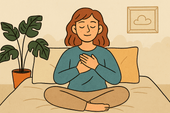
Learning to Feel Safe in Your Body Again
If your body no longer feels like a safe place—due to trauma, chronic illness, or anxiety—you’re not alone. This guide offers gentle, body-based strategies to help you reconnect with yourself, regulate your nervous system, and rebuild trust in your physical experience.
-
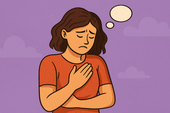
When You Feel Emotionally Unlovable: Challenging the Lie
Feeling unlovable because of your emotions, illness, or sensitivity? You’re not broken—you’re healing. Learn how to challenge the lie of emotional unworthiness and rebuild self-trust, one compassionate step at a time.
-
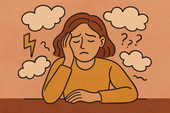
Brain Fog and Fatigue: How to Stop Blaming Yourself
Struggling with brain fog or chronic fatigue? You’re not lazy or failing. Learn how to stop blaming yourself for symptoms caused by MS or chronic illness, and start embracing a more compassionate path to healing and self-understanding.
-
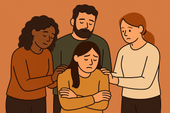
Creating an Emotional Support Team You Actually Trust
Tired of feeling unsupported or misunderstood? Learn how to build an emotional support team you actually trust—with people who see you, hold space for you, and respect your boundaries, especially when living with MS or chronic illness.
-
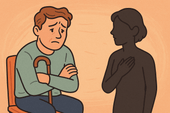
MS, Vulnerability, and the Fear of Being Seen
Living with MS can make vulnerability feel unsafe. Learn why so many people with MS hide their struggles—and how to gently move toward authenticity, self-acceptance, and deeper connection without shame.
-
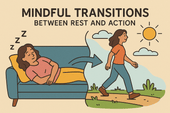
Mindful Transitions Between Rest and Action
Struggling to shift between rest and activity without guilt or overwhelm? This guide offers gentle, mindful strategies to make transitions feel more natural, intentional, and supportive of your nervous system.
-
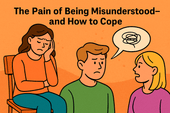
The Pain of Being Misunderstood—And How to Cope
Feeling the sting of being misunderstood? Learn why it hurts so deeply and discover practical, healing strategies to protect your truth, communicate clearly, and rebuild emotional safety when others just don’t get it.
-
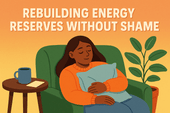
Rebuilding Energy Reserves Without Shame
-

What to Do If You Feel Emotionally Invalidated by Doctors
Feeling emotionally invalidated by your doctor can be deeply distressing. Learn how to recognize medical gaslighting, validate your own experience, and advocate for better care when you’re not being heard.
-

How to Rest Without Feeling Lazy
Rest isn’t laziness—it’s a necessary act of self-respect. Learn how to shift your mindset, let go of guilt, and embrace rest as a vital part of mental and physical well-being.
-
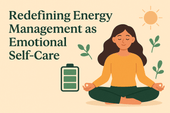
Redefining Energy Management as Emotional Self-Care
Energy isn’t just physical—it’s emotional. Learn how redefining energy management as emotional self-care can help you protect your peace, support your nervous system, and live more in tune with your true needs.
-
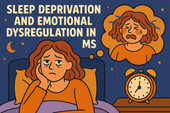
Sleep Deprivation and Emotional Dysregulation in MS
-
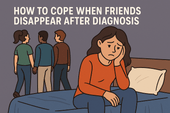
How to Cope When Friends Disappear After Diagnosis
Losing friends after a diagnosis can feel like another kind of grief. Discover why some friends disappear—and how to cope with the emotional fallout while building more supportive relationships.
-

How to Talk to Your Kids About MS Without Overwhelming Them
Struggling with how to explain MS to your kids? Learn how to talk to children of all ages about multiple sclerosis with honesty, clarity, and emotional safety—without overwhelming them.
-
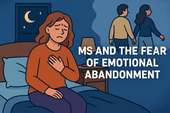
MS and the Fear of Emotional Abandonment
The fear of emotional abandonment is common for people with MS. This article explores why it happens, how it impacts your relationships, and how to create emotional safety and healing.
-
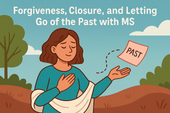
Forgiveness, Closure, and Letting Go of the Past with MS
Living with MS often brings emotional wounds from the past. Learn how forgiveness, closure, and letting go can help you heal emotionally—and reclaim peace in the present.
-
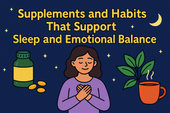
Supplements and Habits That Support Sleep and Emotional Balance
Struggling with poor sleep and emotional ups and downs? Discover calming supplements and daily habits that support deep rest and mental well-being—backed by science and easy to implement.
-
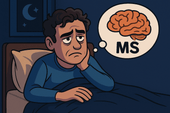
When Insomnia Feels Like Your MS Brain Won’t Turn Off
Struggling to sleep with MS? When your brain won’t shut off at night, insomnia feels relentless. Learn what causes it—and discover science-backed strategies to calm your mind and finally rest.
-

The Emotional Toll of Waking Up Tired Every Day: Why It Hurts More Than You Think
Waking up tired every day takes a deep emotional toll—from mood swings to lost motivation and self-doubt. Learn why chronic fatigue hurts more than you think and how to gently reclaim your mornings.
-
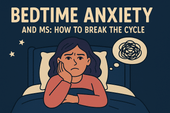
Bedtime Anxiety and MS: How to Break the Cycle
Bedtime anxiety is a common struggle for people with MS—and it’s more than just racing thoughts. Learn how MS-related stress, nervous system dysregulation, and fear of symptoms can create a cycle of sleeplessness, and discover practical, calming strategies to finally reclaim restful nights.
-
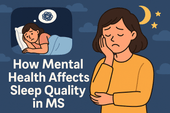
How Mental Health Affects Sleep Quality in MS: Breaking the Cycle of Fatigue and Emotional Distress
Struggling to sleep when you have MS? Discover how anxiety, depression, and neurological changes impact your rest—and what you can do to reclaim it. From CBT-I and calming supplements to lifestyle tips that support both mental health and sleep, this guide offers practical strategies for better nights.
-

Learning to Love Your Life (Even When It’s Not What You Expected)
Your life may not look how you imagined—but it’s still worth loving. Learn how to find peace, purpose, and joy in the unexpected.
-
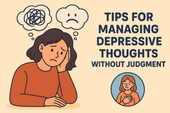
Tips for Managing Depressive Thoughts Without Judgment
Learn how to meet depressive thoughts with compassion, not shame. These gentle, research-backed tools help you manage low moods without self-judgment.
-
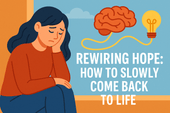
Rewiring Hope: How to Slowly Come Back to Life
Feeling emotionally numb or disconnected? Learn how to gently rebuild hope, one small sensory step and spark of life at a time.
-
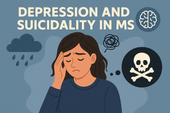
Depression and Suicidality in MS: A Conversation That Needs to Happen
Depression and suicidality in MS are real—and urgent. Learn why we must talk about it, how to spot warning signs, and where to find help and hope.
-
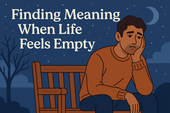
Finding Meaning When Life Feels Empty
Feeling disconnected or numb? Discover gentle ways to find meaning again—even in emptiness—through daily rituals, reflection, and purpose.
-
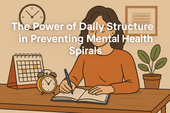
The Power of Daily Structure in Preventing Mental Health Spirals
Daily structure can prevent mental health spirals by creating safety, routine, and self-trust—especially for those with MS, depression, or anxiety.
-

Healing from Emotional Flatness with Sensory Rituals
Feeling emotionally numb or disconnected? Discover how sensory rituals can gently restore pleasure, presence, and emotional resilience.
-
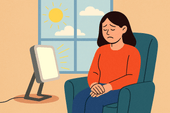
The Role of Light Therapy for Seasonal Depression and MS
Can light therapy ease seasonal depression in people with MS? Discover the science, benefits, and how to use it safely for better mood and energy.
-
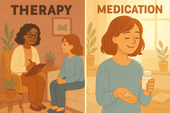
Medication vs Therapy: Treating MS-Related Depression Effectively
Explore whether therapy, medication, or both are best for treating MS-related depression. Understand what works, when—and why combination care is often ideal.
-
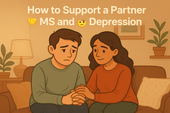
How to Support a Partner with MS and Depression
Learn how to support a partner living with MS and depression—practical tips, emotional tools, and ways to protect your own mental health too.
-
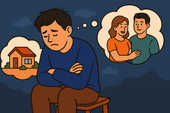
The Emotional Cost of Losing Your Old Life
Losing your old life to MS isn’t just about physical symptoms—it’s about grieving the identity, dreams, and freedom you once had. This article explores the emotional toll of invisible grief and how to begin healing without denying the pain.
-
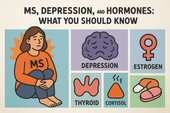
MS, Depression, and Hormones: What You Should Know
MS-related depression isn’t always just emotional—it can be hormonal. Discover how thyroid, sex, and stress hormones influence mood in MS, why women may feel worse during PMS or menopause, and what signs to look for when hormones may be driving emotional instability.
-
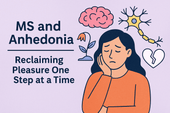
MS and Anhedonia: Reclaiming Pleasure One Step at a Time
Anhedonia—feeling emotionally flat or disconnected—is a common but misunderstood symptom of MS depression. This article explores how neuroinflammation, dopamine disruption, and fatigue can dull your sense of joy—and how small, gentle steps can help you begin to feel again.
-
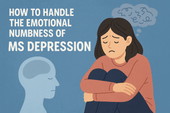
How to Handle the Emotional Numbness of MS Depression
Emotional numbness in MS depression doesn’t always look like sadness—it can feel like nothing at all. Learn why this disconnection happens, how it's tied to neuroinflammation and nervous system overload, and discover science-backed strategies to gently reconnect with your emotions.
-
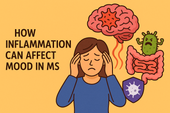
How Inflammation Can Affect Mood in MS
Mood swings and emotional numbness in MS aren’t just psychological—they can be driven by immune system inflammation. This article explores how inflammatory cytokines affect the brain, why mood changes are often biological, and what you can do to calm your nervous system from the inside out.
-
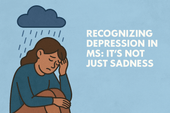
Recognizing Depression in MS: It's Not Just Sadness
Depression in multiple sclerosis (MS) is more than just sadness—it can be a neurological symptom, a side effect of inflammation, or a silent weight that masks itself as fatigue or emotional numbness. This article helps you recognize the hidden signs of MS-related depression, understand the science behind it, and explore real treatment options that support both mental and physical health.
-

Is Cryotherapy Safe for MS? Pros, Cons, and How It Compares to Cold Plunges
Cryotherapy promises quick recovery, inflammation reduction, and mood support—but is it safe for people with MS? This article breaks down the science, risks, and real-life benefits of cryotherapy for multiple sclerosis. You’ll also learn how it compares to cold plunges and which option may be better for calming flares and regulating your nervous system.
-

Can Cold Plunges Help Reduce Inflammatory Flares in MS?
Flares in multiple sclerosis (MS) are often driven by inflammation—but what if cold water could help turn down the heat? This in-depth article explores how cold plunges may help reduce flare frequency and intensity in MS by calming the immune system, lowering pro-inflammatory cytokines, and regulating the nervous system. Learn how to safely use cold exposure as part of your MS recovery routine.
-
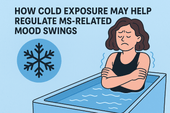
How Cold Exposure May Help Regulate MS-Related Mood Swings
Mood swings are a common but overlooked challenge in multiple sclerosis (MS). This article explores how cold exposure—like cold plunges and showers—may help regulate emotional ups and downs by calming the nervous system, reducing inflammation, and boosting mood-enhancing chemicals. Learn how to use this natural tool safely to support your mental and emotional resilience with MS.
-
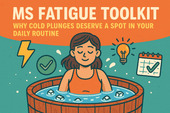
MS Fatigue Toolkit: Why Cold Plunges Deserve a Spot in Your Daily Routine
Fatigue is one of the most debilitating symptoms of multiple sclerosis (MS)—often invisible, misunderstood, and overwhelming. While no single tool can eliminate it, building a personalized fatigue management toolkit can make life more manageable. One surprising contender? Cold plunges. In this article, we explore why cold water immersion might be the refresh button your nervous system needs—and how to safely make it part of your MS fatigue routine.
-
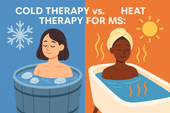
Cold Therapy vs. Heat Therapy for MS: Which One Helps More?
Managing multiple sclerosis (MS) often means navigating symptoms like fatigue, spasticity, pain, and nerve dysfunction. But when it comes to using temperature-based therapies, there’s a question many patients face: Should I be using cold or heat? In this in-depth guide, we explore the benefits, risks, and best use cases of cold therapy vs. heat therapy for MS.
-
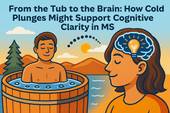
From the Tub to the Brain: How Cold Plunges Might Support Cognitive Clarity in MS
Cognitive fog is one of the most frustrating symptoms of multiple sclerosis (MS). But could cold plunges—those bracing dips into icy water—offer a surprising path to mental clarity? This article explores the emerging science behind cold exposure, brain function, and how a cold tub might help people with MS sharpen focus, lift brain fog, and reset their nervous system.
-
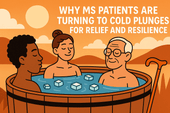
Why MS Patients Are Turning to Cold Plunges for Relief and Resilience
Cold plunges are no longer just for elite athletes and wellness influencers. A growing number of people with multiple sclerosis (MS) are turning to cold water immersion to ease symptoms, build nervous system resilience, and find calm in the chaos of chronic illness. This article explores why—and how—you might want to give it a try.
-
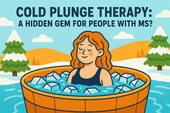
Cold Plunge Therapy: A Hidden Gem for People with MS?
Cold plunge therapy—once the domain of elite athletes and biohackers—is gaining attention among people with multiple sclerosis (MS). Could it help reduce inflammation, calm the nervous system, and ease MS symptoms like fatigue and spasticity? In this article, we dive deep into the science, benefits, safety, and practical application of cold plunges for MS recovery and symptom relief.
-
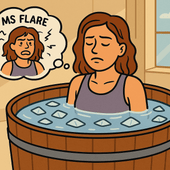
Finding Relief in the Midst of a Flare
MS flares can leave you feeling overwhelmed, exhausted, and mentally foggy. Cold water therapy is emerging as a promising tool to help reset the body and mind after a flare. This article explores how cold exposure supports recovery, calms the nervous system, and can be safely added to your daily routine.
-
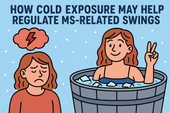
How Cold Exposure May Help Regulate MS-Related Mood Swings
Mood swings in multiple sclerosis (MS) can feel like emotional whiplash—one moment calm, the next overwhelmed, angry, or hopeless. While medications and therapy help, many people with MS are exploring natural strategies to support emotional balance. One surprising tool gaining attention? Cold exposure. In this article, we explore how cold plunges and other forms of cold therapy may regulate the nervous system, stabilize mood, and offer emotional relief for people with MS.
-
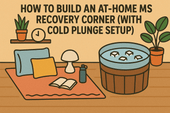
How to Build an At-Home MS Recovery Corner (with Cold Plunge Setup)
Create your personal MS recovery oasis at home—complete with a cold plunge setup. Learn how to design a space that supports healing, reduces inflammation, and helps you manage symptoms naturally.
-
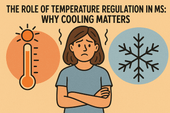
The Role of Temperature Regulation in MS: Why Cooling Matters

















































